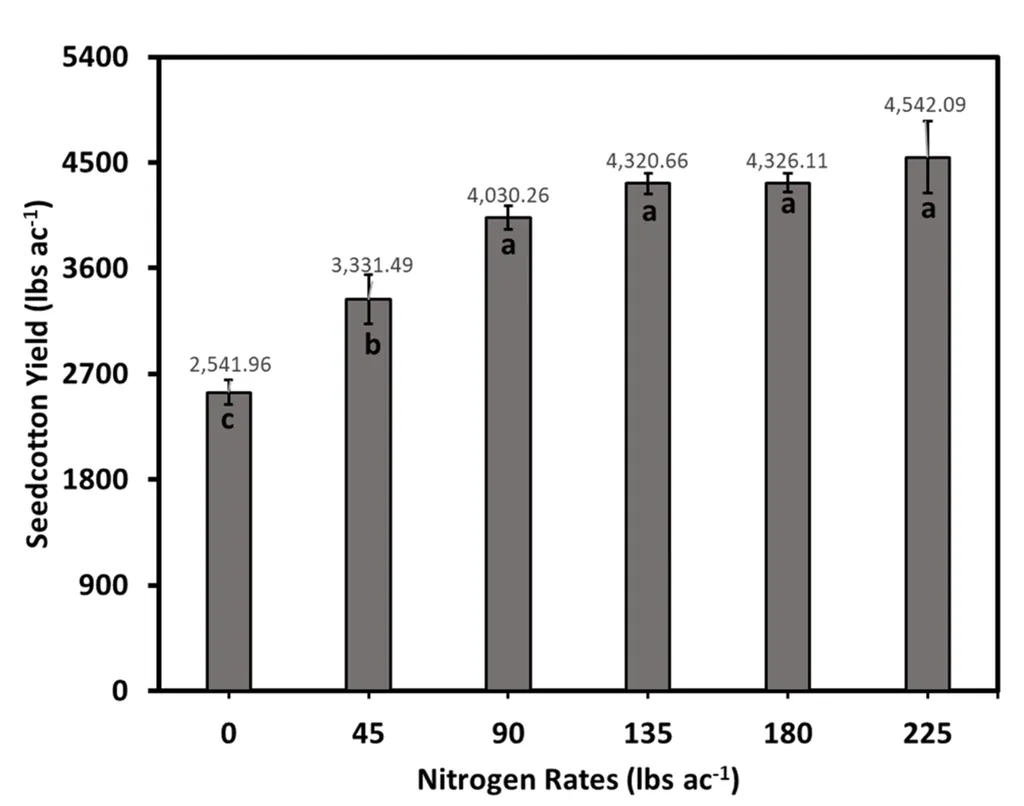In the heart of the Florida panhandle, where rainfed agricultural systems and sandy soils dominate, a groundbreaking study has shed light on a critical environmental challenge: ammonia volatilization. This process, where nitrogen (N) is lost from fertilizers as ammonia (NH3), has severe environmental impacts, including ecosystem eutrophication and secondary particulate formation. The study, led by Kulpreet Singh from the West Florida Research and Education Center at the University of Florida, investigated the potential of enhanced efficiency nitrogen fertilizers (EENFs) to mitigate these losses in rainfed cotton production.
The research, conducted over two years (2023 and 2024), compared four types of fertilizers: conventional urea (U), urea coated with a urease inhibitor (U + NBPT), urea coated with both urease and nitrification inhibitors (U + NBPT + DCD), and polymer-coated urea (PCU [41‐0‐0]). The findings were striking. In 2023, cumulative NH3 emissions were 50%–87.5% higher under conventional urea compared to the other treatments. The following year, emissions from conventional urea and urea with a urease inhibitor were 83%–87% higher than those from urea with both inhibitors and polymer-coated urea.
“These results underscore the significant potential of EENFs to reduce ammonia losses under rainfed conditions,” Singh explained. “Moreover, there was no significant effect on lint yield, meaning farmers don’t have to compromise on productivity to achieve these environmental benefits.”
The implications for the agricultural sector are profound. Ammonia emissions not only contribute to environmental degradation but also represent a loss of valuable nitrogen fertilizer, which has economic repercussions for farmers. By adopting EENFs, farmers can reduce these losses, improve nitrogen use efficiency, and contribute to more sustainable agricultural practices.
The study, published in the ‘Journal of Sustainable Agriculture and Environment’ (translated to English as ‘Journal of Sustainable Agriculture and Environment’), highlights the importance of innovative solutions in addressing environmental challenges in agriculture. As the world grapples with the impacts of climate change and the need for sustainable food production, research like this offers a beacon of hope.
Looking ahead, the findings could shape future developments in fertilizer technology and agricultural practices. The potential to reduce ammonia emissions without compromising yield opens up new avenues for sustainable farming. It also underscores the need for continued investment in research and development to tackle the complex challenges facing modern agriculture.
As Singh noted, “This is just the beginning. There’s so much more to explore in terms of optimizing fertilizer use and minimizing environmental impact. The future of agriculture lies in these innovative solutions.”

